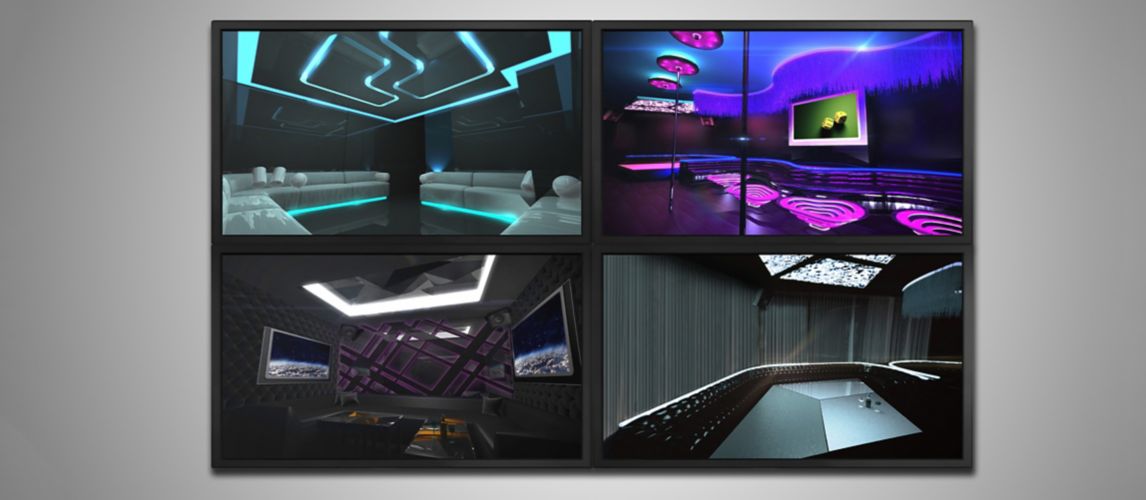CCTV and Security Camera Buying Guide
CCTV and Security Camera Buying Guide
Introduction
CCTV and security cameras are the perfect solution for monitoring a home or a business. They help deter theft and crime and are useful for business security, or at home, for checking on pets and family members. But with so much choice available, it can be hard to know which home CCTV systems to buy.
This CCTV guide tells you everything you need to know about CCTV and security cameras to help you decide. It covers what CCTV is, the types of CCTV cameras available, and their features. We also give tips on calculating the number of cameras you need, where to position them, ways you can store the data, and things to consider before buying.
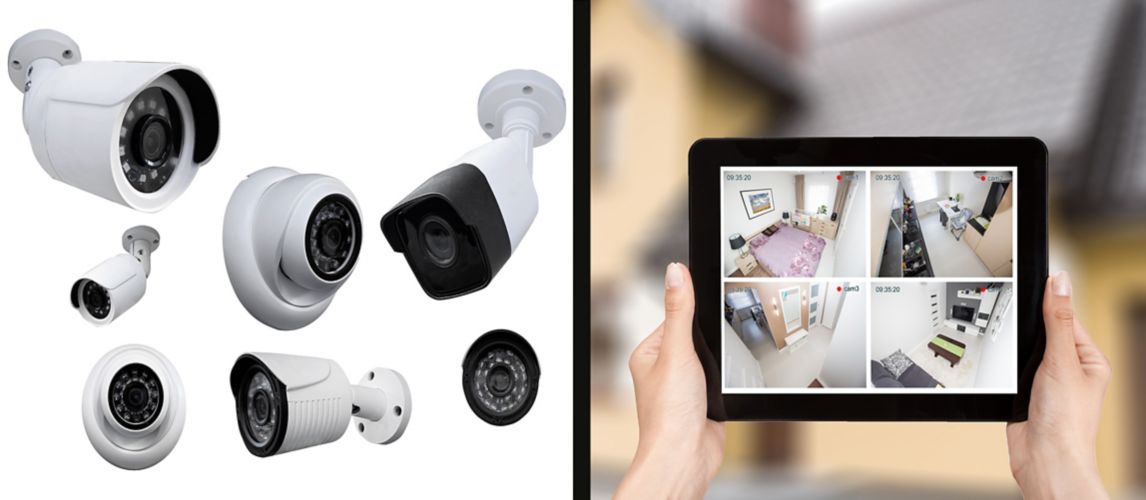
What is CCTV?
CCTV (closed-circuit television) cameras are used in homes, businesses, and public places to record video footage for surveillance and security purposes. They work by taking live video footage and sending it to a recording device, the cloud, or a monitor. Then, depending on the model, the footage can be watched live or played back later.
All CCTV cameras sold by Screwfix are also smart enabled. This means they're connected to the internet and controlled via an app on a smartphone, tablet or smart speaker. Users can view live camera footage from anywhere in the world and receive alerts to their phones if the camera is activated.
There are three CCTV camera connection types available that work using different technology and recording devices:
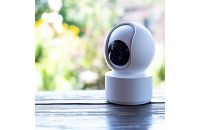
BNC camera:
This is the most established CCTV camera technology available. It works on a wired network, and video footage is recorded in analogue - an older form of technology that sends unprocessed images to a DVR (digital video recorder).
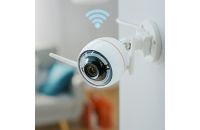
WiFi camera:
CCTV cameras with a WiFi connection send their footage over the internet. For power, they can be wired into the electrics or wire-free (see more about this in the next section). The cameras work on an IP (Internet Protocol) system that records video footage in a compressed digital format. They then send their data to an NVR (network video recorder), smartphone, tablet, laptop, PC or smart TV.
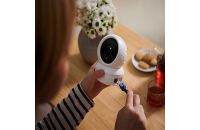
Ethernet camera:
CCTV cameras with an ethernet connection send their data and get their power from an RJ45 ethernet cable. This is also known as PoE (Power over Ethernet). These cameras work on an IP (Internet Protocol) system that records video footage in a compressed digital format. They then send their data to an NVR (network video recorder), smartphone, tablet, laptop, PC or smart TV.
CCTV Camera Types
There are many different CCTV camera types and uses: indoor and outdoor CCTV systems, wired, WiFi/wireless and wire-free cameras, and cameras with varying functions.
Here’s a run-down of what’s available:
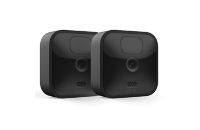
Indoor and Outdoor CCTV Cameras
Some CCTV cameras are designed to be used both inside and outside. But most are designed specifically for one or the other. Outdoor cameras can withstand extreme weather, so they are more robust and have waterproof outer casings. And outdoor cameras often have a wider field of vision than indoor cameras, so they can cover larger areas.
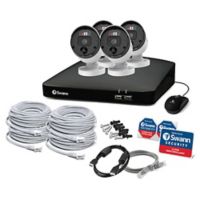
Wired, WiFi, and Wireless CCTV Cameras
A wired CCTV camera and camera system uses wires to connect it to the power supply and internet. A WiFi CCTV camera or camera system is often mistakenly referred to as a wireless camera. However, in most cases, it's only the internet connection that's wireless. They still need wires to connect them to the electricity supply. Wire-free CCTV cameras and camera systems are the only cameras to have no wires at all. Instead, they are battery-powered and connect to the internet through WiFi. We'll cover each of these three options in more detail further down in this section.
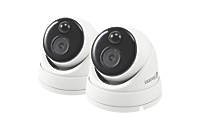
CCTV camera shapes and functionality
CCTV cameras come in a variety of shapes, which have different uses:
Dome-shaped CCTV cameras are small and dome-shaped. They're tamper-proof and are designed to be installed on ceilings. Their dome shape and positioning give them a wide field of view
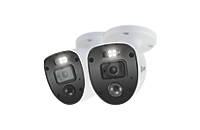
Bullet CCTV cameras are compact, inconspicuous and tamper-proof. They're designed to be installed on walls in small rooms, usually in corners, to give them the best view.
Pan, tilt and zoom (PTZ) CCTV cameras are the most flexible. They can move left and right horizontally and tilt up and down vertically, covering all angles on a 360° rotation. The lens can also be zoomed in and out to focus on a particular object. These cameras are suited to monitoring large areas.
Covert CCTV cameras are essentially 'hidden' or 'disguised' cameras. They're often designed to look like a smoke detector for home security use. Hidden cameras are useful, but a visible CCTV camera is better for home security because it acts as a deterrent.
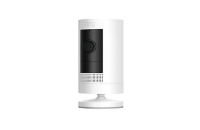
Standalone cameras
When you purchase CCTV cameras, there’s the option to buy a full CCTV system, consisting of a recording box (an NVR or DVR recorder) and two or more CCTV cameras. You can then purchase add-on cameras to extend the system, but they must be compatible. So, if the existing system uses an NVR recorder, you’ll need to buy NVR cameras.Alternatively, you can purchase standalone CCTV cameras which work independently of any other camera system. There’s no recording box to worry about. Instead, they use WiFi to send their data directly to the cloud, or they have an SD data storage card, or both. So, if you want to add more cameras later, you don’t have to buy the same one.
Wired Security Camera Systems Explained
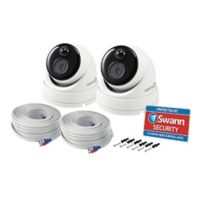
Wired CCTV cameras use cables for power, internet connection and video transmission. There are two ways this can work.
- Cameras with a BNC connection are wired into the electrical circuit. They have a cable that runs from the camera to a DVR recorder. There's then another cable that connects the DVR recorder to the internet router.
- Cameras with an ethernet (PoE) connection use an RJ45 cable which provides both power and an internet connection in one cable. This cable connects the camera to an NVR recorder which is connected to the internet router.
All wired CCTV cameras sold at Screwfix are also WiFi-enabled. This means that wired versions will have the option of transmitting data through a WiFi connection in addition to the wired connection. This provides backup data storage and allows the user to view footage live, from anywhere in the world, through a smartphone, tablet, laptop, PC, or smart TV. Wired CCTV cameras are more reliable than the other options, but their installation process is more disruptive.
WiFi Security Cameras Explained
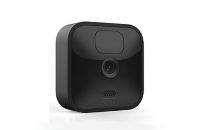
WiFi CCTV cameras (also known as Smart CCTV cameras) are often mistakenly referred to as wireless. However, that’s misleading. The 'wireless' part comes from these cameras transmitting their footage wirelessly from the camera to a smartphone, tablet, laptop, PC or smart TV through a WiFi connection. But they still need wires to connect them to a power supply. WiFi CCTV cameras are easier to install than wired versions. However, their reliability can be hampered by a poor WiFi signal which may be weak in some areas of the home or business. Although installing a WiFi extender will help.
Best Wire Free Security Cameras
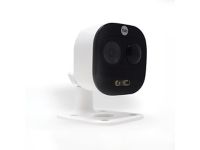
Wire-free CCTV cameras are the only cameras with no wires at all. Instead, they are battery-powered and transmit their footage wirelessly from the camera to a smartphone, tablet, laptop, PC or smart TV through a WiFi connection.Wire-free cameras are much easier to install than 'wireless' and wired cameras because they can be positioned anywhere and don't require electrical wiring work. The only downside is the batteries will have to be changed every so often. And if the camera is placed in a high-use area with a lot of motion to trigger it, the battery will drain quickly. Also, the image quality on wire-free CCTV cameras isn't usually as good as other types of cameras because the footage is compressed to conserve battery life. If you're considering buying wire-free CCTV cameras, look for cameras with long battery life (one year) and rechargeable batteries. If it's an outdoor camera, look for one with a solar panel, so it charges from the sun.
Outdoor Security Camera Systems Explained
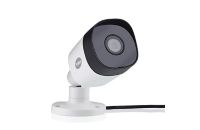
The best outdoor security cameras are more robust and weatherproof than indoor cameras. They’re able to withstand high and freezing temperatures, as well as wind, rain, snow and hail. To determine how weatherproof a camera is, look at its IP (ingress protection) rating (not to be confused with an IP – internet protocol – system). The IP rating refers to how much protection the camera gets from its casing, and it's shown using the letters IP, followed by two numbers.
-
The first number will be 5 or 6, which refers to how resistant the casing is to dust. 5 means some dust will get into the case, while 6 is totally dust-proof.
-
The second number will be 5, 6 or 7 and refers to how water resistant the casing is. A rating of 5 is water-resistant, while 7 is waterproof.
When choosing an outdoor CCTV camera, consider how it will be connected to power and the internet. The best outdoor CCTV cameras use WiFi to connect to the internet because it's hard to run internet cables outside. A wired connection is best for power, but it may be tricky to install. A wire-free, battery-powered camera is the easiest to install outdoors but consider how accessible the camera will be for battery changes.
Other useful features to consider for an outdoor CCTV camera are night vision, motion sensors and a wide-angle lens. Some outdoor cameras record in HDR (high dynamic range), eliminating glare and shadows. And some cameras come with heat detection, which is more reliable than motion detection alone. Some cameras also play a noise through a speaker when it senses movement (such as a barking dog) to deter intruders.
Indoor Security Cameras Explained
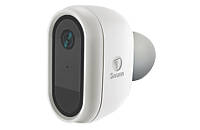
The best indoor security cameras for a home or business will depend on the size of the rooms they will be used in and what they will be used for.
If you need multiple cameras for indoor and outdoor use, consider buying a CCTV system with several cameras that can be used in both areas. These kits are usually more cost-effective than purchasing single cameras. But, if you just need one camera for indoors, opt for indoor use only camera, as it will cost less than an outdoor one.
If camera footage is going to successfully identify an intruder, then a high-resolution camera is a must. Resolution is measured in pixels, and a resolution of at least 720p is recommended, but 1080p is even better.
Other useful features to consider for indoor CCTV cameras are night vision and motion sensors. Also, consider the camera viewing range (measured in degrees). Large rooms will benefit from a wider viewing range than small rooms.
Smart security cameras also make great indoor security cameras. They connect to the internet through WiFi, and footage is viewed on a smartphone or tablet from anywhere in the world. Alerts can be sent to a mobile phone if the camera is activated so the homeowner or business owner can check-in to see if there's an intruder or a false alarm. They can also be used to check on a business, or pets and family members when away from home.
Security Camera Features
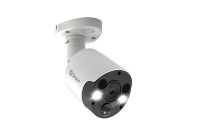
When you’re deciding on the best security camera for your needs, there are a few features to look out for:
Rotating CCTV camera
Some intruders are experts at navigating CCTV camera blind spots, so rotating CCTV cameras have been designed to combat that. They can rotate 360° to offer surveillance over a large area. Some rotating CCTV cameras also have motion tracking to follow any detected movement. The only disadvantage to these cameras is that they can't capture footage of an area where the camera isn't looking. So, if there was activity on two sides of a room, for example, the camera would only capture one.
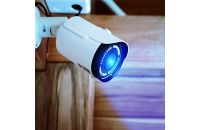
Infrared CCTV camera and night vision
Infrared CCTV cameras have LED lights positioned around the camera lens to provide night vision. As burglaries often happen after dark, this feature is invaluable. Every camera differs in quality, but most will record good quality footage in low light and acceptable quality footage in complete darkness. The camera can switch automatically between day and night vision as light levels drop. The only disadvantage of night vision cameras is that they can only record black and white. So, you wouldn't be able to see the colour of a suspicious car that drove by, or the hair colour of an intruder, for example.
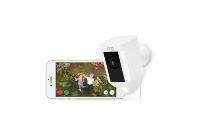
Motion sensors
Rather than recording continuously, CCTV cameras with motion sensors can record only when they detect motion. This feature is particularly useful on smart CCTV cameras because it triggers an alert to a smartphone when the home or business owner is out (see more about this below). It also means less data storage space is needed compared to recording continuously, saving money if storage is being paid for. The main disadvantage of motion sensor CCTV cameras is that the sensor can lead to false alerts from animals, cars or even inanimate objects blowing in the wind. However, more advanced CCTV cameras with motion sensors can be set up to ignore animals. And some also have facial recognition to identify people who live there
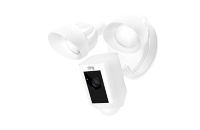
Smart security cameras
Smart security cameras connect to the internet through WiFi. They allow homeowners or business owners to protect and monitor their property using an app on a smartphone or tablet from anywhere in the world. They can also activate and deactivate the alarm using voice control through a smart speaker. Smart security cameras are useful because they allow users to view live footage as and when they want, which is ideal for checking in on pets or family members. Or they can have alerts sent to their phone if the camera is activated. So, if there is a break-in, emergency services can be called straight away. Smart CCTV cameras can also be connected to other smart security devices such as smart burglar alarms, doorbells, and smoke and fire detectors. Find out more about this in our smart security guide. The only disadvantage of smart CCTV cameras is that live footage can’t be watched if the internet connection goes down. However, they will still record footage that can be watched back later.
Security Camera Positioning
When installing security cameras, it's essential to install them correctly to get the best view and ensure they can't be easily tampered with. So here are a few tips on where to position them.
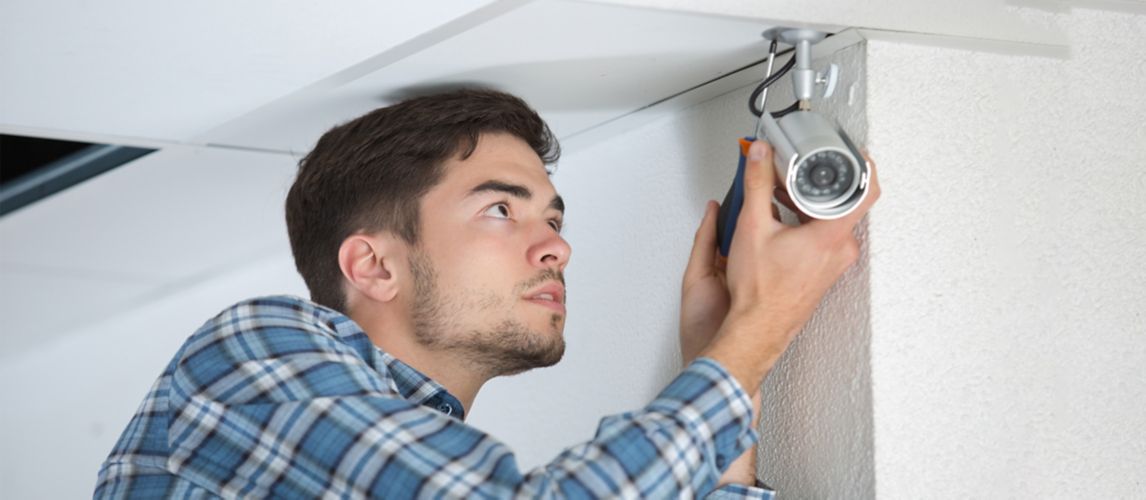
Indoor Security Camera Placement
To get the maximum field of view, indoor security cameras are best placed high up in the corners of rooms. Preferably facing the door to get a front view of anyone entering the room. Ensure they are angled correctly too. If the angle is too high, they will only record the top of an intruder's head If the cameras need to be wired in, choose a corner that’s closest to an electricity supply. It’s also important to ensure they’re securely fixed in place with screws so they can’t easily be knocked down.
Also, be mindful of reflections and glare as these will reduce the quality of the video footage. In a sunny room, point the camera away from direct sunlight. Also, be careful of glare bouncing off mirrors.
If you’re installing a WiFi CCTV camera, check it will get a strong enough signal from the WiFi router to work. WiFi extenders can be installed if the signal is weak.
Outdoor Security Camera Placement
Outdoor cameras should be secured to a firm surface at a height of at least 10m. This ensures they get the best view and puts them out of reach so they can't be tampered with. Don't put them in front of anything that can obstruct their view, such as trees and bushes. And ensure they are tilted down at the right angle to capture what's going on at ground level.
WiFi CCTV cameras are the easiest cameras to install outside. But a home's WiFi signal is often weaker outside than inside, considering it has to travel through solid walls. So, check the signal, and if it's not strong enough, either move it to an area with a stronger signal or install a WiFi extender.
Calculating the Number of Cameras You Need
The number of cameras you need to install in a home depends on the size of the house and the level of security required. Below is a list of all the places you could potentially install CCTV cameras:
- Entrances: As a minimum, install an indoor camera pointing to the main entrance at ground floor level. But, to increase security, you could install one at every entrance. This could cover a front and back/side door, as well as any doors that lead into the garden.
- Hallway/landing: Since most rooms are accessed via a hallway or landing, installing cameras in these areas means an intruder can't avoid being captured as they move from room to room.
- Ground floor, off-street windows: If an intruder enters a home through a window, they'll choose one that's out of view of the main street. So, CCTV cameras can be used inside or out to monitor these windows.
- Main living rooms: Intruders are likely to search for valuables in shared spaces such as living rooms or kitchens, so installing cameras here is worthwhile. They can also be used in these rooms for monitoring pets and family members.
- Driveways and gardens: Outside cameras are useful for monitoring valuables outside, such as cars and anything stored in a garden shed or garage. They can also capture any suspicious activity.
We don't recommend installing CCTV cameras in bedrooms or bathrooms for privacy reasons.
Once you’ve calculated the number of CCTV cameras you’d ideally like, check whether the system you plan to buy can support them. Also, consider whether there may be a need to add additional cameras in future.
CCTV systems that use DVR or NVR recorders are restricted by the number of ports/channels the recorder has. Each port supports one camera. DVR recorders are available with a maximum of 8 ports, while an NVR recorder can have up to 16. If you buy a CCTV system kit, sometimes the recorder only has enough ports for the cameras it comes with, but sometimes they have extra. So, always check to ensure there are enough ports for now and the future.
Most Smart CCTV cameras and standalone cameras don't have these limits. Although a few must be used with a smart hub that does limit numbers. For example, Blink branded CCTV cameras work with their own' sync module' that supports up to 10 cameras.
CCTV Footage Storage
When it comes to storing footage recorded by a CCTV camera, there are a few options to consider, depending on your needs:
Cloud-based online storage vs internal storage
With internal storage, the footage is saved on a local hard drive, i.e., the connected DVR or NVR recorder, an SD card or a USB stick. This is the safest way to store data in terms of security because hard drives can’t be hacked. However, there are two disadvantages to internal storage. The first is that the space available is limited. Once the limit is reached, old data must be deleted. The second disadvantage is if the system crashes or the hard drives fails, all the data is lost.With cloud-based storage, the footage automatically gets uploaded to a cloud server. The data is safer in terms of not being lost. But, as with any internet-based system, it could be hacked if appropriate internet security measures aren't put in place. The storage provider may limit the amount of CCTV cloud storage capacity you get. But it can be increased (although often at a cost) if necessary.[Text Wrapping Break][Text Wrapping Break]Most CCTV cameras have both types of storage, so if one method fails, the other acts as a backup.
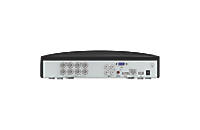
DVR and NVR recorders
DVRs (digital video recorders) and NVRs (network video recorders) are hard drives with internal storage. When purchasing a CCTV camera that uses one of these systems, it's important to look at its storage capacity. They can range from 32GB to 2TB. The maximum length of video footage they can hold depends on the resolution of the video. For example, they'll store more hours of standard resolution video than high-definition video. As a guide, 32GB will hold approximately 40 hours' worth of high-definition footage, and 2TB will hold 320 hours. Once the storage capacity has been reached, the recorder automatically overwrites the oldest footage.
Paying for storage
Most WiFi CCTV cameras use cloud-based storage, but the amount of storage that comes with them for free varies. Some companies provide generous storage plans, while others have nothing or only a minimal amount. Adding extra cloud-based storage is usually possible but comes at a cost by signing up for a monthly subscription. So always check before buying.
5 Things to Consider Before Buying a CCTV and Security Camera
It’s always important to do your research before buying CCTV and security cameras to ensure you’re getting the right product for your needs.
Here are five other things to consider:
1. What resolution is required?
A good quality recording is essential to get a clear picture of a person or read a number plate on CCTV footage. So, check the camera's resolution, which is measured in pixels. The higher the number, the better the video quality. At the very least, opt for a 720p resolution. But some cameras can record in 4 or 5 megapixels or more for high definition, which is ideal for recording from long distances or zooming in. 4K options are also available.
2. How many days of footage, how many cameras, and what quality is needed
When deciding how much storage the CCTV system will need, there are three factors to consider. [Text Wrapping Break][Text Wrapping Break]First: how many days of footage need to be stored at any one time? This could be the longest holiday period the user will take. Storing footage for a two-week holiday, for example, will require a large amount of storage. [Text Wrapping Break][Text Wrapping Break]Second: how many cameras are set up? The more cameras there are, the less recording time storage capacity they’ll have.[Text Wrapping Break][Text Wrapping Break]Third: What quality footage is needed? High-definition recordings will use more storage space than lower quality resolutions. [Text Wrapping Break][Text Wrapping Break]However, if the CCTV camera is set to only record when it detects motion rather than continuously, a smaller storage capacity will be sufficient.
3. Audio recording and two-way audio options
If there’s a need to capture sound along with video recordings, a CCTV camera with a built-in microphone is ideal. Most WiFi CCTV cameras have built-in speakers too. This allows the homeowner to communicate with the people or animals in their home when they’re away through a smartphone app.
4. Motion alerts
Being able to watch video footage back after a burglary is useful. But being alerted to a burglary while it's happening is even better. WiFi security cameras often include motion alerts that trigger recording when motion is detected and send an alert to the homeowner's smartphone. This means the police can be called immediately.
5. Connect with smart home products
If there are already other smart home devices installed, check their compatibility with any smart CCTV cameras you intend to buy. For example, smart CCTV systems can be connected to a smart speaker, such as Alexa or Google Home, so the system can be voice-controlled. Others can be connected to other smart home systems via a compatible smart hub. These systems allow automation to be set up, such as turning on a radio or light if motion is detected through the CCTV camera.
